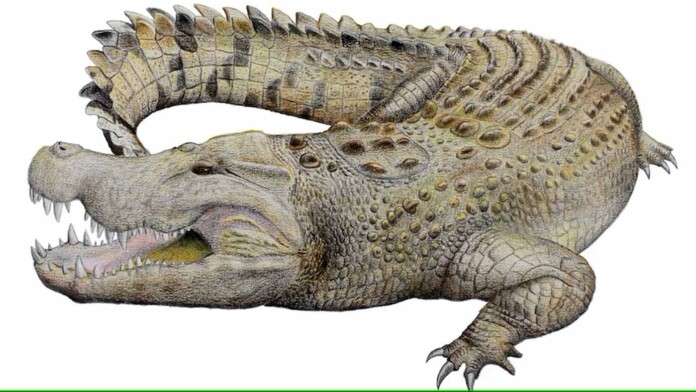In a captivating waltz with time, Australia’s revered saltwater crocs graciously step aside to make way for Baru iylwenpeny, a recently revealed ‘cleaver-headed’ crocodile from the Northern Territory. This extinct marvel, dating back approximately 8 million years, unfolds a narrative from an era when the Australian landscape was a lush haven.
Unearthed in 2009 at the Alcoota fossil bed, the exquisitely preserved skull of Baru iylwenpeny has entranced biologists at the Museum and Art Gallery of the Northern Territory. A symbol of adaptability, this crocodile species thrived in a lusher, wetter environment, transforming into a semi-aquatic ambush predator with a penchant for hunting megafauna in riverine domains.
Unlike their contemporary counterparts, Baru crocs flaunt robust skeletal frameworks, wider mouths, and more formidable skulls—a testament to their evolutionary prowess.
Dr. Adam Yates, the earth science curator, unveils the distinctive features, pointing out, ‘The main difference between [Baru iylwenpeny] and the other older Barus is that it has bigger back teeth—all of these adaptations are pretty much giving it a bigger, stronger bite.’
With a broader mouth accommodating extra-large teeth, Baru iylwenpeny emerges as a formidable predator, likely indulging in a diverse menu.
As climatic shifts altered Australia and riverine habitats diminished, these prehistoric crocs faced extinction during the middle of the Miocene Epoch, leaving an indelible mark on the ancient tapestry of Australia’s crocodilian legacy.
